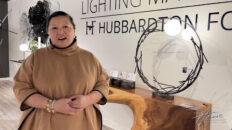By Simon Calvin
Lighting is an important element in home design. Not only can different styles of light fixtures change the aesthetics of a room, the amount of light can completely change a room’s mood. Bright, overhead lights create a business-like mood, while diffused lights in a room’s corner creates a softer vibe. That’s why it’s important to understand how to achieve effective lighting throughout your home.
Lighting goes beyond beautiful and fancy fixtures and light output. Lighting also contributes to how well a room fulfills its role in your house. After all, you probably don’t want a super bright bedroom, nor would you want a moody mudroom. So as you begin to evaluate effective lighting throughout your home, keep in mind the function and purpose of each room. That will help you determine how much light you want to artificially include in the space. From there, you’ll be able to choose fixtures that accentuate the aesthetic that you’re looking to achieve. These tips can help you determine how lighting can help (or hurt) each area of your home.
Family/TV Room
While you might turn the lights off when you’re watching a scary flick, for optimal TV viewing the television should never be the only light source in the room. When lighting your family room, avoid overhead lights or lamps at the same level as the television because they can detract from the viewing experience. To reduce possible eye strain, tuck small lights in alcoves, or use wall sconces placed near the television to send light up a wall.
Dining Room
In the dining room, it’s best to create a relaxing mood. An overhead light will allow those gathered around the table to see each other while they converse and dine together. Install a dimmer switch on the light fixture so that the amount of light over the table can be adjusted. After the dinner dishes are cleared and coffee is served, create a cozier atmosphere by dimming the overhead light or turning it off altogether in favor of corner lamps that give off a soothing glow.
Kitchen
As the workplace in your home, the kitchen needs to have lighting that, well, works for it. Use spotlights underneath cabinets to light work areas or install recessed lights in the ceiling to create a similar effect. If you have a desk or an office hub space in your kitchen, task lighting can be appropriate. Pendant lights can also be very pretty in a kitchen. If the kitchen is used to prepare and eat meals, install dimmer switches to create a different mood at mealtime.
Office/Study
Similar to the kitchen, the office is another home workplace. As such, its lighting needs to be flexible. A bright desk light that illuminates the work surface is essential, but lamps that give off a softer glow should also be in the room to make the office appropriate for more relaxing tasks. You might also opt for overhead lighting if your office doesn’t have natural window light, but typically, task lighting can help keep your office illuminated—and productive.
Bedroom
The bedroom is another room that serves many purposes in the home. Soft lighting that promotes relaxation is important, as are reading lamps that can be individually turned on and off at bedside. However, bright overhead lights or track lighting should be available for getting dressed in the morning in the form of a ceiling fan light. Even standing lamps in a corner can add additional light that also functions as a statement piece.
Hall Wall/Entrance to House
Careful attention must be paid to the hall that welcomes people into the home. Warm, welcoming, and soft light is perfect for the home’s entrance. Pendants or chandeliers that hang are appropriate, as are wall sconces or lanterns. If these lights are combined with reflective metals, like mirrors, the home’s entrance can appear larger, brighter, and above all, welcoming.
When choosing appropriate light for the home, aesthetics, mood, and function must be considered. Each room should have beautiful lighting that can create different moods and allow those in the home to use each room as is appropriate.Simon Calvin is a specialist lighting display designer producing large scale outdoor lighting decorations for parties and the holiday period. He also designs a number of the products for Ukchristmasworld.com.




